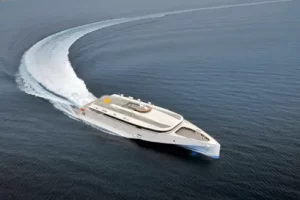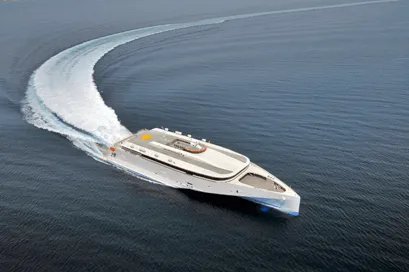Ship stability refers to the ability of a ship to maintain equilibrium in different conditions of loading and operation. It is an essential aspect of ship design, ensuring that the vessel remains upright and does not capsize or list excessively in rough seas. Proper ship stability is necessary for safe and efficient transportation of cargo, passengers, and crew. There are several factors that influence ship stability, including the vessel’s weight and center of gravity, the shape and size of the hull, and the location and distribution of cargo. These factors are carefully considered during the ship design phase, and stability calculations are performed to ensure that the vessel meets international standards and regulations.
Ship manoeuvrability, on the other hand, refers to the ability of a ship to change direction, speed, and course while at sea. It is influenced by various factors, including the vessel’s propulsion system, rudder design, and the placement of thrusters or propellers. Good maneuverability is essential for safe navigation in confined spaces, such as ports and harbors, as well as for effective operation in open seas. Ships with poor maneuverability may have difficulty avoiding collisions or navigating through narrow channels and may be more vulnerable to adverse weather conditions. Ship stability and maneuverability are closely related, as changes in the vessel’s weight or center of gravity can impact its ability to maneuver. In addition, effective use of propulsion and steering systems can help improve stability in rough seas or during sudden changes in course or speed. Proper training and experience are critical for ship operators to effectively manage ship stability and maneuverability. Crew members must be knowledgeable about the vessel’s design and operating characteristics and understand how to respond to different scenarios to ensure safe and efficient operation at all times.

Ship manoeuvring refers to the actions taken by a ship’s crew to control its movement and direction. This includes controlling the ship’s speed, direction, and position and performing various maneuvers, such as turning, stopping, and changing course. The maneuvering of a ship depends on various factors, including the ship’s size, shape, weight, engine power, and the environmental conditions in which it operates, such as wind, waves, and current. The ship’s crew must consider these factors when maneuvering the ship to ensure the safety of the vessel and its passengers and cargo. There are several methods that can be used to maneuver a ship, including the use of rudder and propeller, thrusters, tugboats, and anchor. The use of these methods depends on the ship’s size, the degree of maneuverability required, and the environmental conditions in which the ship is operating.
One of the most common methods of ship maneuvering is the use of the rudder and propeller. The rudder is a vertical plate at the ship’s rear that is used to steer the ship, while the propeller is a rotating device located at the bottom of the ship that generates the thrust to move the ship forward. By turning the rudder, the direction of the ship can be changed, while adjusting the speed of the propeller controls the ship’s speed.
In addition to the rudder and propeller, some ships may be equipped with thrusters, which are small propellers located on the sides of the ship that can be used to change the ship’s direction without using the main propeller. Thrusters are particularly useful for ships operating in tight spaces or areas with strong currents.
Tugboats are also commonly used for ship maneuvering, especially in ports and other confined areas. Tugboats are small, powerful vessels that are used to tow or push larger vessels into or out of port, or to assist in other maneuvers.
The anchor is another tool that can be used for ship maneuvering. By dropping the anchor, the ship’s position can be stabilized or the ship’s speed can be slowed down. This can be particularly useful in emergency situations where the ship needs to stop quickly.
Overall, ship manoeuvring requires skill and experience on the part of the ship’s crew. It involves a combination of techniques and tools that must be used in a coordinated manner to ensure the safe and effective movement of the ship.
Prepared by MaritimEducation team.

